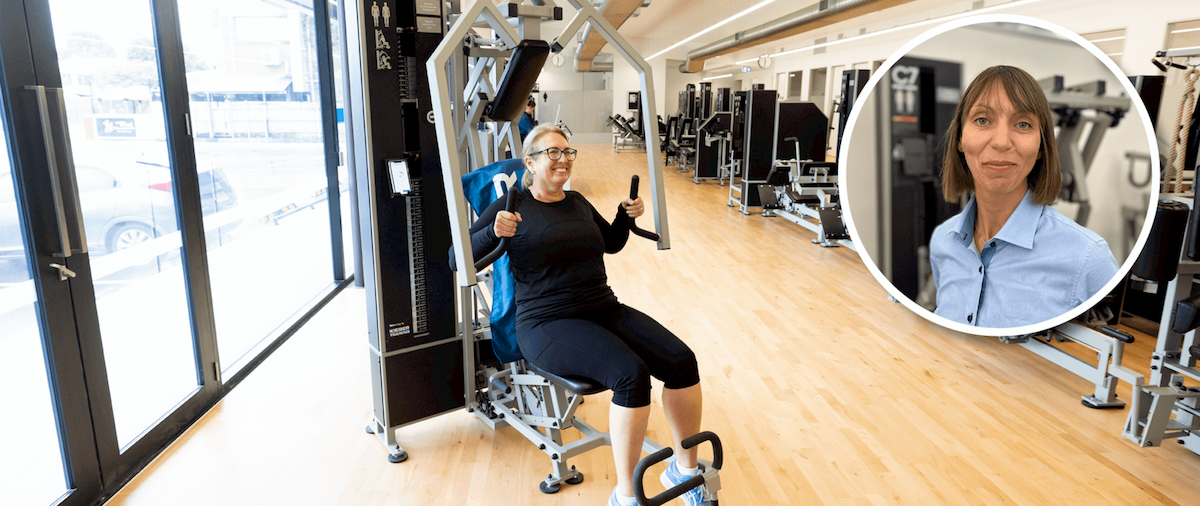March 8th is International Women’s Day, a global day celebrating the social, economic, cultural, and political achievements of women. The day also marks a call to action for accelerating women's equality. At Kieser, we aim to make our environment safe and inclusive for all genders to allow our clients to build strength achieve their health goals. While over 50% of Kieser members are female, this is not the case for other strength training environments in Australia. According to the Australian Institute of Health and Welfare, only 22% of women meet the Australian Physical Activity Guidelines for strength training, as opposed to 25% of men. At Kieser, we hope to close this gap by bringing awareness to the benefits of strength training for all genders.
There are many barriers for women participating in strength training, one of which is the misconception that women will get “bulky” from strength training. While strength training doesn’t affect women in exactly the same way as it affects men, it has its own benefits for all genders.
Hear from Physiotherapist, Katja Brandt, on some of the main benefits of strength training for women. Katja is a senior Physio with over 7 years’ experience at Kieser seeing a variety of clients. She has worked at Kieser Mont Albert and Camberwell and has recently joined the team in Torquay.
- Improve bone density – Nearly 5 million Australians have poor bone health and women are four times more likely to have osteoporosis than men. “Many clients I see with Osteoporosis are worried that resistance training is unsafe and can lead to fractures,” says Katja. “In fact, evidence has shown that strength training is one of the most effective ways to improve bone health and as long as the exercise is performed at an optimal intensity with appropriate supervision, there is a low risk of fracture.”
- Improve pelvic floor strength – Maintaining a strong pelvic floor is important for all genders but is particularly important for women. 80% of those with urinary incontinence are women and 70% of those with urinary leakage do not seek advice and treatment for their problem. In addition, pregnancy can greatly increase the prevalence of major pelvic floor dysfunction. According to Katja, “One of the most unique machines at Kieser is our A5 machine. You may not even have noticed it as it does not draw attention, however it is an incredibly effective piece of equipment.” The “sensor tube” on the machine detects the intensity of your pelvic floor muscles and displays them on the screen so you can visualise your training. “There are very few fitness facilities that have a piece of equipment to isolate and strengthen your pelvic floor. We are so lucky at Kieser that we have this equipment as addressing pelvic floor weakness can have a huge effect on someone’s life,” says Katja.
- Reduce the rate of muscle loss – Men and women begin to lose around 3-8% of their muscle mass per decade after the age of 30. However, for women, menopause leads to an estrogen deficiency that is associated with decreases in skeletal muscle mass and strength. Studies have shown that menopause can contribute to a 10% reduction in muscle mass. All of this muscle loss can lead to pain and injury. This is why strength training is so key for women to staying active and pain-free as they age.
- Prevent falls – The risk of falls increases with age and women are nearly 50% more likely to experience a fall than men. There are many factors as to exactly why women are more likely to experience falls, however it is partly due to the decrease in muscle mass in women as they age. Due to this, strength training is crucial for women to help prevent falls as they age. Strengthening the muscles in the lower limbs can help your muscles to react quicker and more powerfully when you lose your balance. In addition, a strong body is less likely to become injured if you do experience a fall.
- Improve metabolism – Overall, women tend to have a slower metabolism than men.Lean muscle utilises more calories at rest than fat does, so by increasing your muscle mass, you can increase your resting metabolic rate. In addition, your body not only uses energy during your strength training session, but studies have shown that you have a 5% increase in resting energy expenditure for up to 72 hours after your strength training session.






























